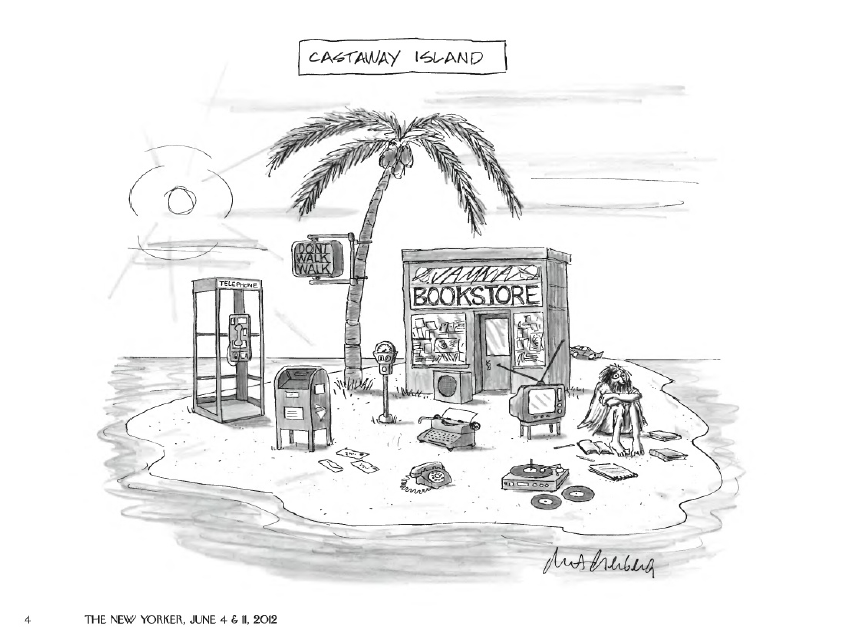In The New Yorker you’ll find fiction, poetry, reportage — you name it. But if there’s one thing we can’t imagine disappearing from one of the most popular and successful American magazines of all time, it’s the cartoons. Below are a few things every up-and-coming animator, designer, and visual artist can learn from the cartoons that have been making people laugh and think since 1925.
Find Your Voice
Of course, learning which style brings out the best of your skills and creativity is only part of becoming a professional visual artist. You also need to find a way to set yourself apart from the rest so that people see something fresh and satisfying in your work. This is by far one of the toughest things to accomplish, and many animators take several years and hundreds of drawings to do so.
Three New Yorker cartoonists who developed iconic voices are Roz Chast, Michael Maslin and Peter Arno. Despite providing countless popular cartoons for the famed magazine, one can tell the subtle yet particular differences between their cartoons. Finding your voice means allowing your own personality to reveal itself and unfold through your work, whether you are animating a film or creating graphics for a client.
Stay On Top of Current, Popular Trends
One of the biggest reasons New Yorker cartoons have remained popular for nearly a century is because they’re made for you and me. In other words, the artists hoping to get their cartoon published make sure their work relates to cultural trends and what’s going on today. They speak to the times, as well as the culture.
The lesson to learn here is that every aspiring animator should have an understanding of what companies and clients are looking for. If your portfolio is brimming with work that’s contemporary and speaks to the technology and trends of the moment, you’ll better demonstrate your ability to speak to a specific audience.
The Career Path Is Competitive
It’s no secret that getting your work accepted by the New Yorker is an accomplishment worthy of celebration. They receive thousands of cartoons each year from hundreds of artists looking to make a name for themselves, and yet, only a few will be published. And even cartoonists who do secure coveted space for their work in the prestigious magazine will likely tell you that their success was hard-won, and built upon a pile of rejection letters. The moral of the story: the visual arts are competitive, and you will need determination, patience, and openness to criticism as well as talent in order to succeed.
Even the most focused, adaptable, and talented illustrator will sooner or later face rejection. The key is to have persistence and thick skin, which means never allowing a failure to keep you from moving forward and plugging away to secure and create great work.
Try Different Styles
Whether you’re looking to work in comic books, fashion, design, visual effects, or film, the best thing any artist can do is equip themselves with different tools. Part of becoming a diverse, flexible animator is learning to try other techniques and approaches, even if it’s new territory. The worst that could happen is that you discover your strengths and weaknesses, which is valuable information to help you focus on strengthening your professional skills.
This is why you’ll find all sorts of styles while skimming through the best New Yorker cartoons. Bob Mankoff, one of the most famous cartoonists in America, had over 500 cartoons rejected before he found success with “Surely You Jest,” which was made with a pointillist style consisting of dots to create the images. Although this cartoon served as his first step toward making cartoons for a living, he didn’t stick to this style alone and went on to make countless others via different techniques.
What inspirations have you drawn from The New Yorker cartoons? Let us know in the comments below!


